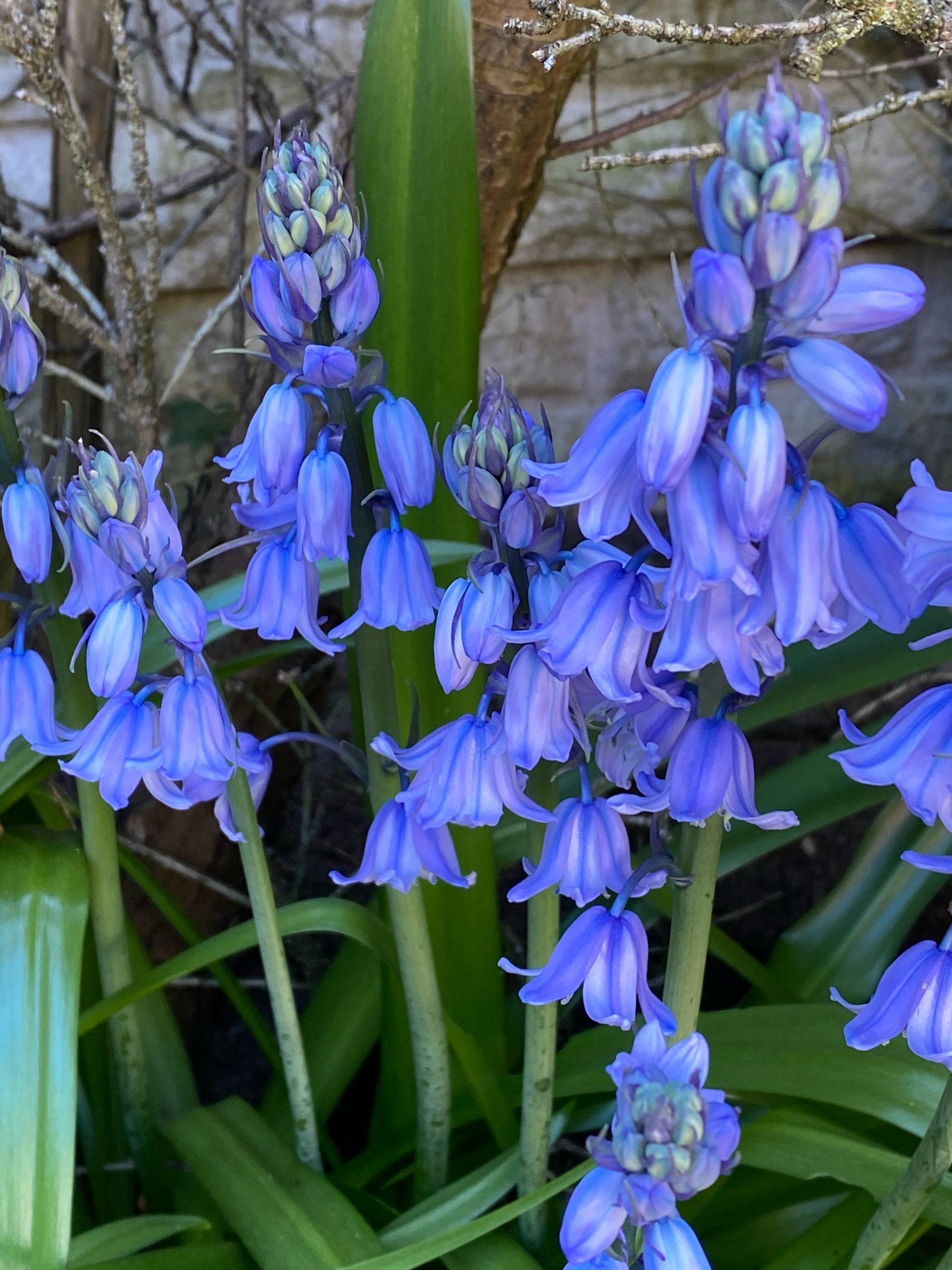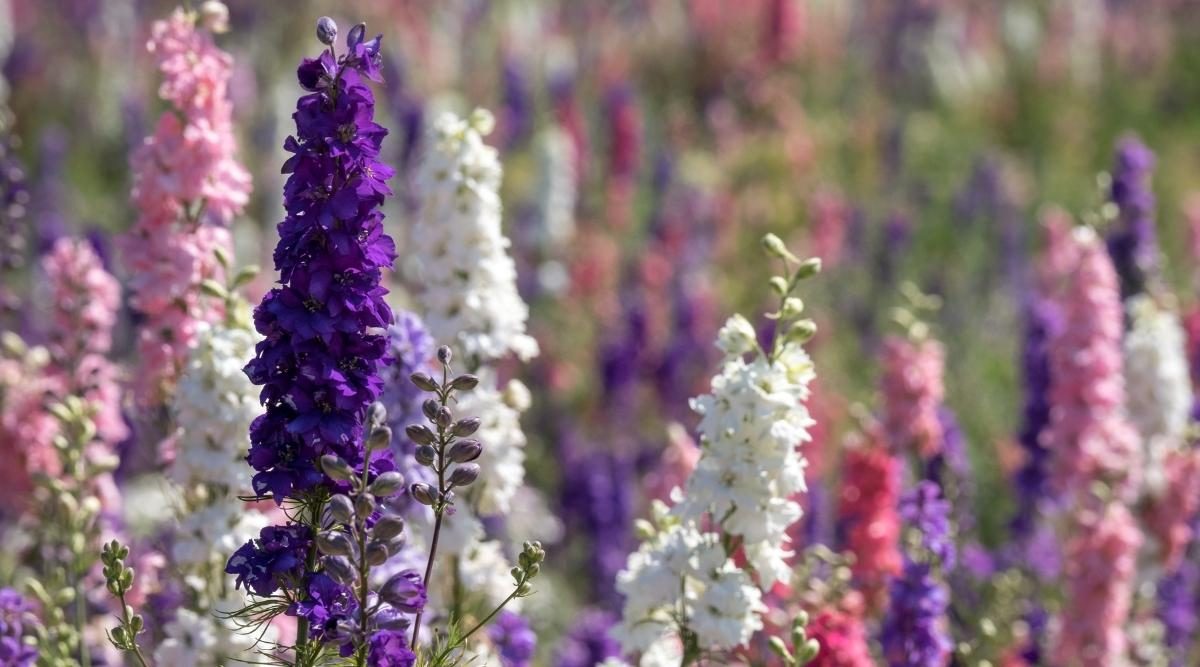25 Most Popular Types of Pine Trees Grown in The UK
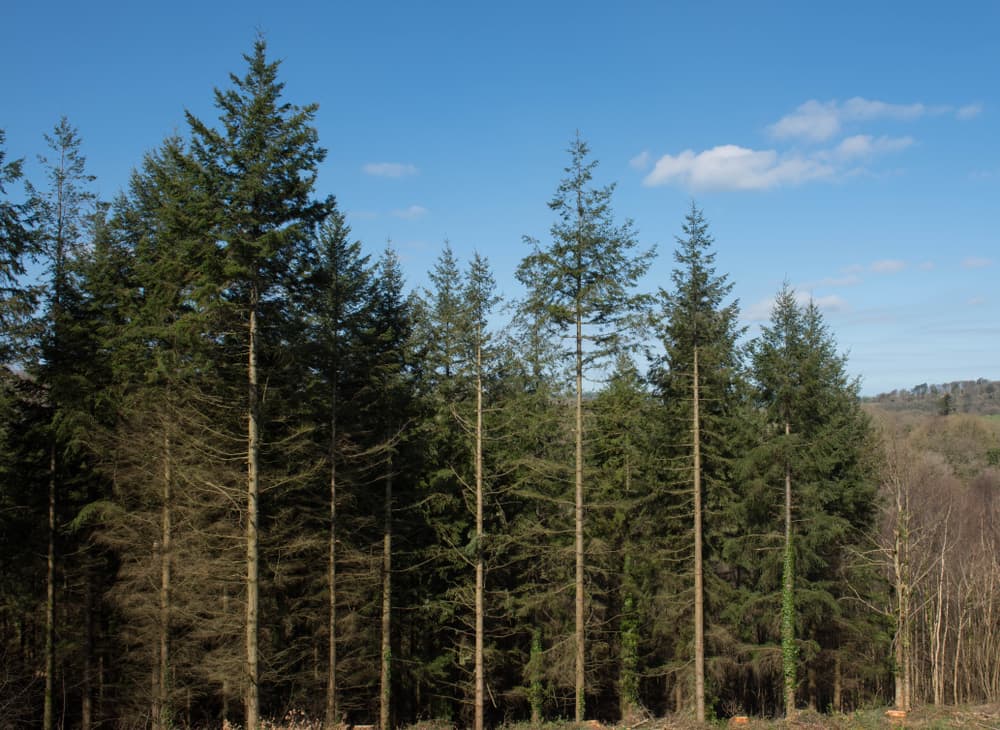
Table of Contents
Pine trees are a part of the coniferous family with leaves shaped like long needles. These trees are probably one of the most well-known varieties across the world. Conifers are also perennial plants, meaning that their leaves will not fall off even in winter. Apart from their evergreen beauty, they also live and grow for hundreds of years.
However, different types of pine trees in the UK behave in different manners during their lifetime. Some varieties are native to the UK, while others can easily be grown there. The majority of these trees are also native to the northern hemisphere, making them well-equipped to handle the cold. In this article, we talk about the different kinds and natures of conifers that grow well in the Uk.
Types of Pine Trees in the UK That Are Perfect for Your Home
1. Scots Pine
Scots Pine, the majestic evergreen conifer, is the only pine that is native to the UK. It can live up to 700 years, and mature trees can grow up to attain a massive height of 35m. The tree is known for its scaly orange-brown bark and blue-green, slightly twisted needles.
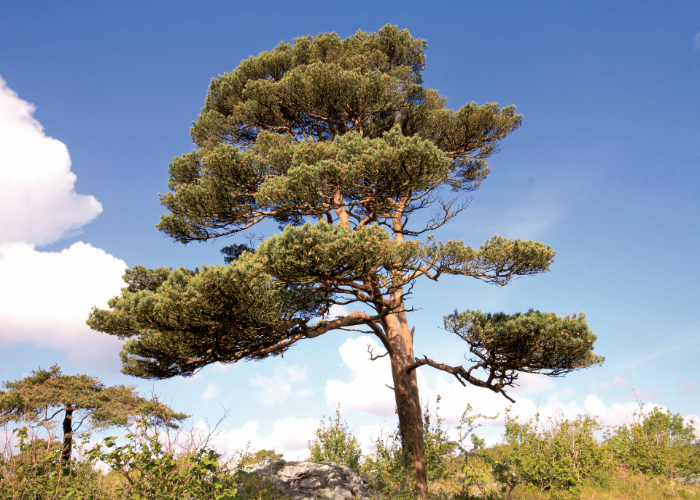
Scots pine also thrives under the full sun and should be planted in any direction. But since its ultimate spread can be wider than 8 meters, make sure to provide ample space around it. The pine retains its leaves. No pruning is required.
Botanical Name: Pinus Sylvestris
Hardiness Level: H7
2. Corsican Pine
Among the popular types of pine trees in the UK, the Corsican pine has made a name for itself due to its hardiness. The plant is not native to England but is grown in the south and eastern sides of the country. This black pine is also very fast-growing and can live up to 500 years.
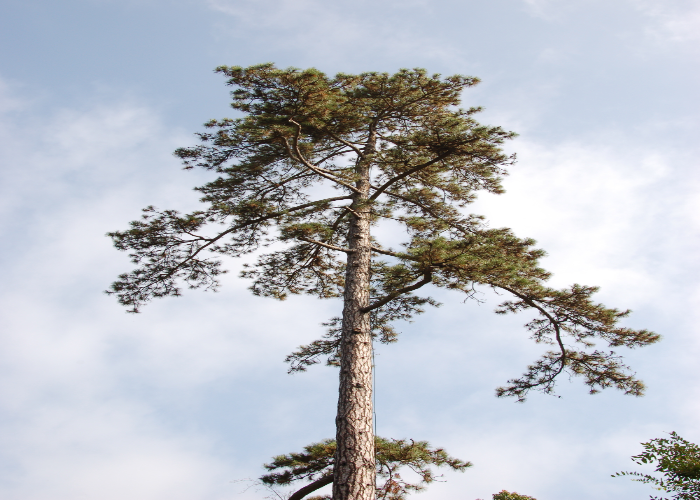
A distinct feature of this tree is its straight trunk which is often harvested for timber. This large evergreen can also reach an impressive height of 40m with a wide spread. Its leaves are dark grey-green and come in pairs.
Botanical Name: Pinus Nigra Subsp. Laricio
Hardiness Level: H7
3. Lodgepole Pine
The lodgepole pine is another plant among the types of pine trees in the UK that was introduced to England. Its popularity spread after 1855 when people relished its hardiness and tolerance to poor soil quality. Since then, it has been used as a timber crop grown in Northern England.
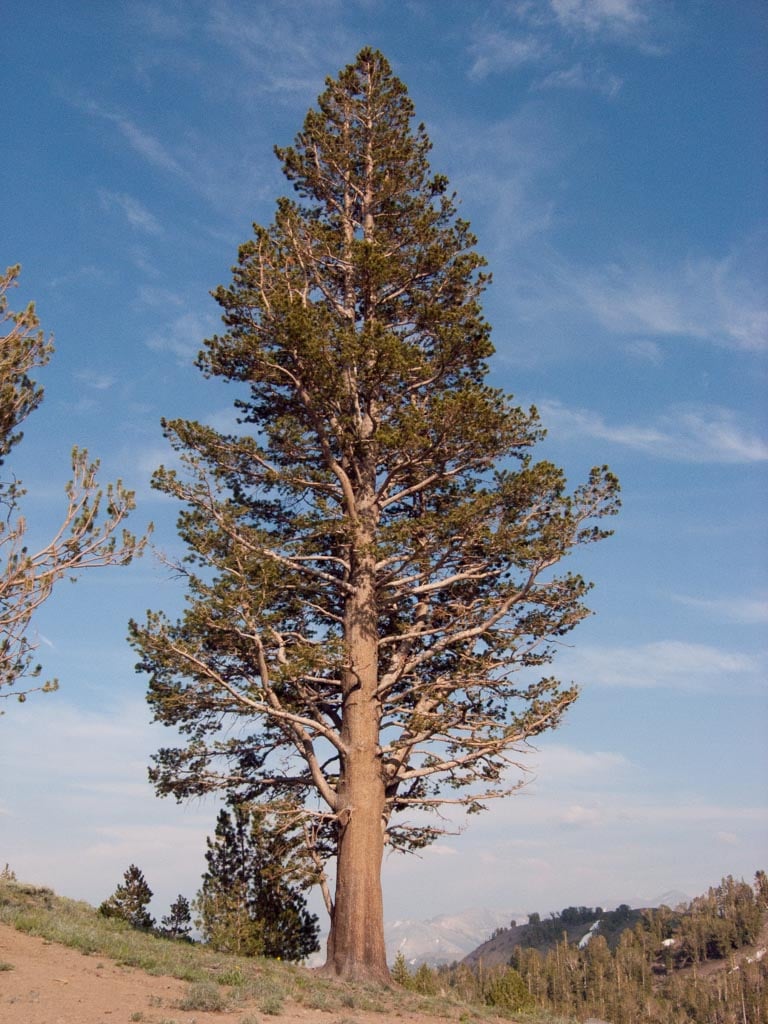
Lodgepole pine is known for its large conical or domed shape, along with its thick bark and twisted young shoots. The tree also bears yellowish-green, needle-like leaves that often occur in pairs and needs no pruning.
Botanical Name:Pinus Contorta
Hardiness Level: H6
4. Bosnian Pine
This type of pine trees UK is known for its beautiful shape. The Bosnian pine is large and grows up to be almost 20m tall. The young trees also get a broad oval crown that becomes irregular over time. And even though it is not native to the UK, it grows well in most well-drained soils.

Bosnian pine has distinctive stiff, needle-like glossy dark green leaves that often curve towards the twig. This conifer also needs no pruning, but if necessary, make sure to do so between late summer and midwinter.
Botanical Name: Pinus Heldreichii
Hardiness Level: H6
5. Dwarf Mountain Pine
Compared to the other types of pine trees in the UK, dwarf mountain pine is shaped like a small tree or shrub. They are native to the mountains of Europe and offer a beautiful spot of colour and structure to your garden.
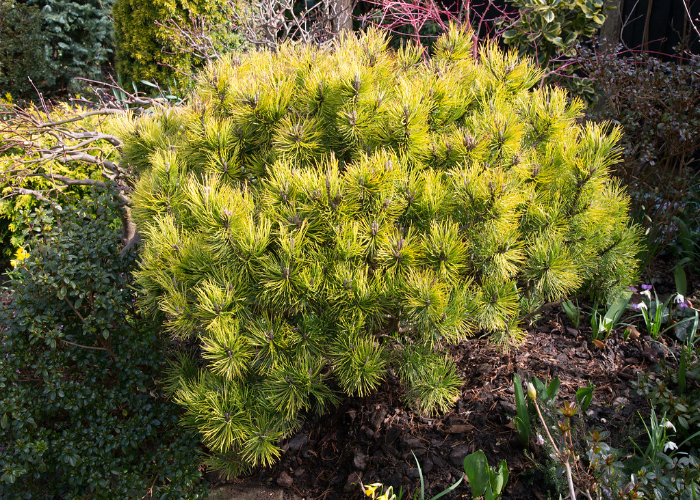
The dwarf mountain pine grows best in well-drained soil under the full sun. Therefore you can cultivate it in any direction, and the tree will give short, dark green foliage throughout the year. The plant also needs little maintenance and no pruning after it has been established.
Botanical Name:Pinus Mugo
Hardiness Level: H7
6. Weymouth Pine
The Weymouth pine has various other names like Eastern white pine and North American white pine. This particular conifer is also among the large types of pine trees in the UK and is mostly used for its decorative quality.
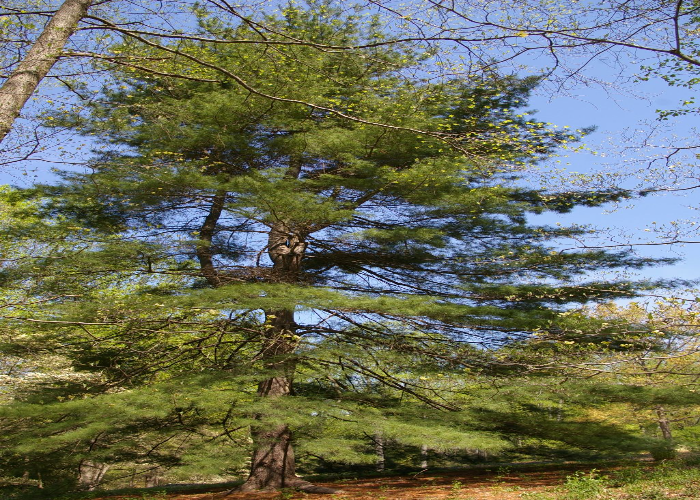
The straight vertical trunk is often accompanied by a narrow crown when young. And its leaves are bright bluish-green and soft, with needles that come in a set of 5. Weymouth pine is also a quick-growing tree and can reach a height of almost 60 to 70 m in its natural habitat.
Botanical Name:Pinus Strobus
Hardiness Level: H7
7. Schwerin’s Pine
The Wiethorst pine is a kind of dwarf conifer that reaches a height of just 1.5–2.5 meters as a mature tree. Its ultimate spread, too, is just 1–1.5 meters, making it perfect for small gardens. The long, soft, drooping, blue-green leaves make for a great addition, as it also won the RHS Award Of Garden Merit.
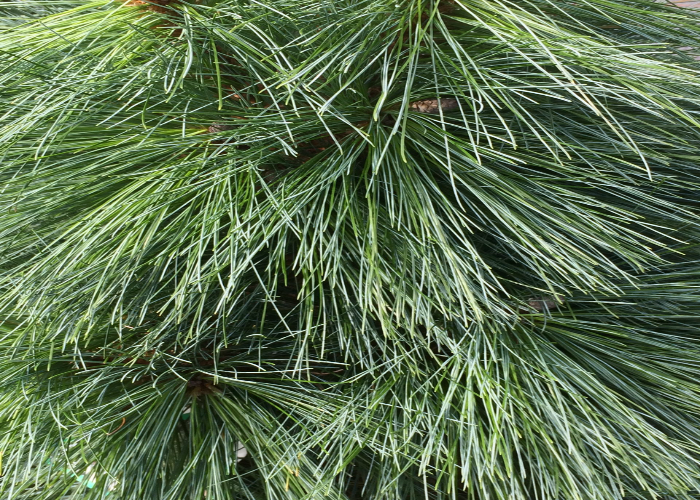
Botanical Name:Pinus × Schwerinii
Hardiness Level: H7
8. Japanese White Pine
The Japanese white pine is another type of pine trees UK that are not native to Britain but is grown there. The tree is a slow-growing decorative kind that thrives in any soil that is fully drained. The bright full sun, when faced from a south-facing position, is perfect for its ideal growth.
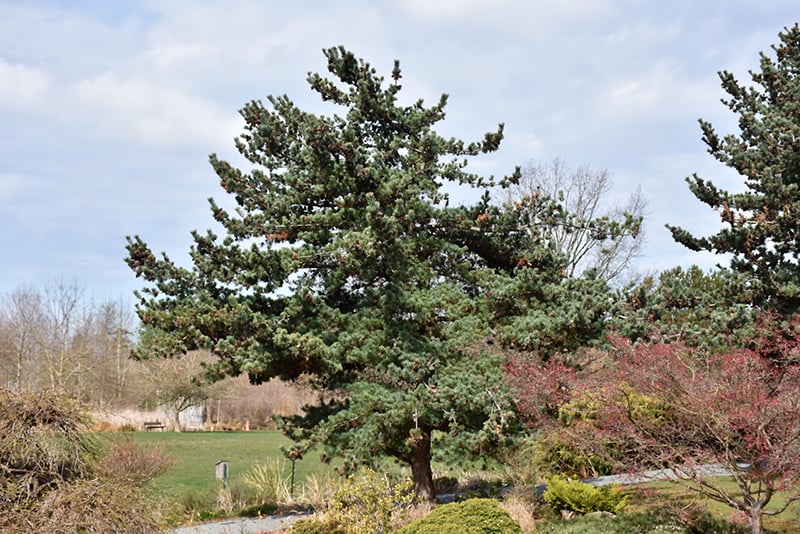
The Japanese white pine is known for its distinctive year-round, very twisted, bluish-green leaves with a smooth purplish grey trunk. Its crown is irregular and semi-closed, with branches that hang low. The tree can also be planted in industrial areas.
Botanical Name:Pinus Parviflora
Hardiness Level: H7
9. Stone Pine
The stone pine is sometimes known as Italian stone pine or umbrella pine, but the tree is the same. The conifer is not native to the UK but is grown there and just needs well-drained soil to flourish. When planting, make sure it gets full sunlight and is facing south or west.
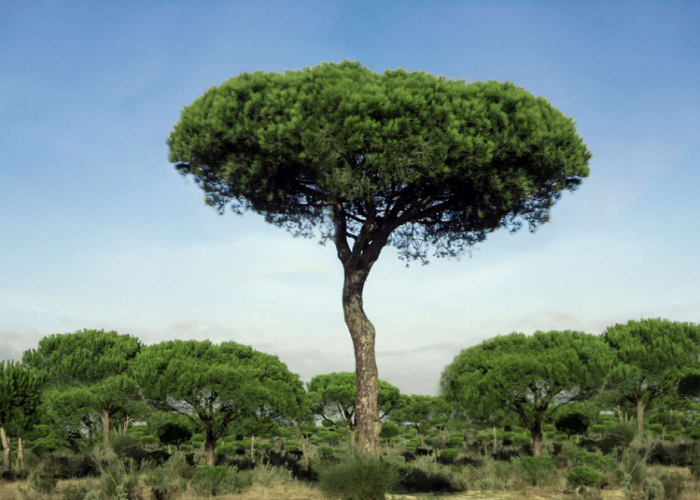
This evergreen conifer has a distinct round shape that sets it apart from the othertypes of pine trees in the UK. It also has stiff, dark green needles that can reach an impressive height of 15 cm.
Botanical Name: Pinus Pinea
Hardiness Level: H4
10. Mexican Yellow Pine
The Mexican yellow pine has other names, like Mexican weeping pine and Patula pine, and is a beautiful evergreen. This tree is not as hardy as the other pine trees in the UK, but it more than makes up for it with its beauty. While young, it can suffer due to frost, so keep an eye out during the early stages of planting.
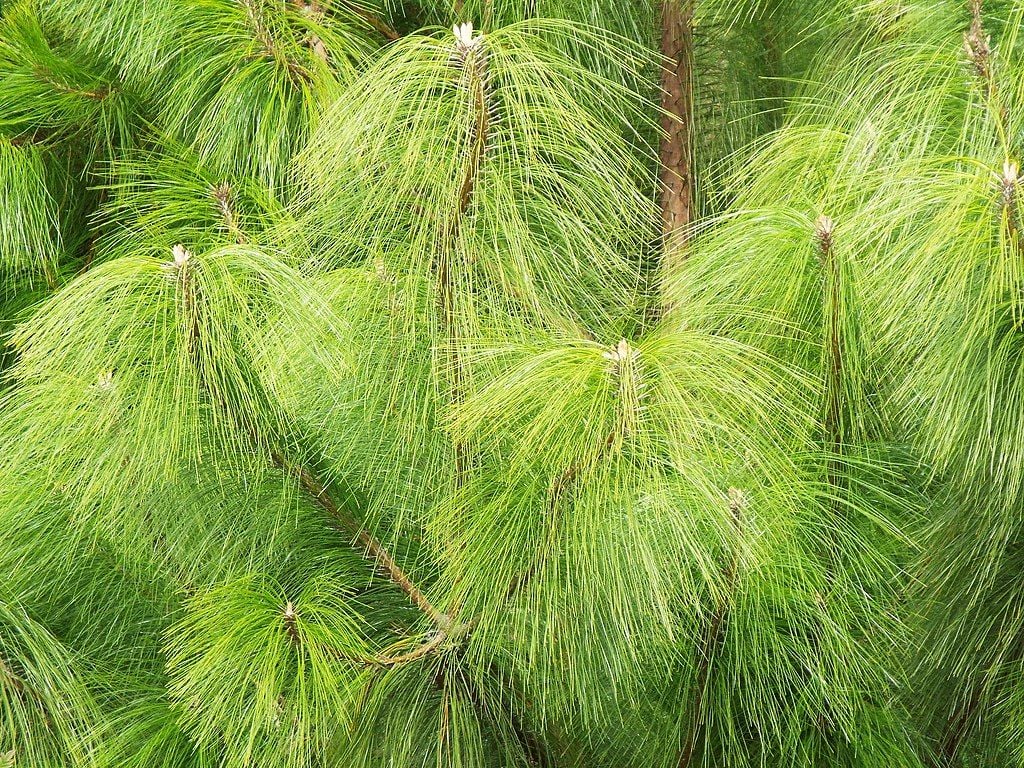
The weeping pine is known for its rounded nature, which spreads broadly. It also has beautiful slender, drooping bright green leaves that enhance the aesthetic of every garden. Its scaly, red-brown bark also creates a great foil to the stark leaves.
Botanical Name:Pinus patula
Hardiness Level: H4
11. Japanese Red Pine
The Japanese red pine is a bright evergreen which can reach an ultimate height of more than 12 m at maturing. The conifer is also hardy with a tall, round, or broadly conical shape to it, making it perfect for every garden. It also meshes well with othertypes of pine trees in the UK, even though it is not native to the land.
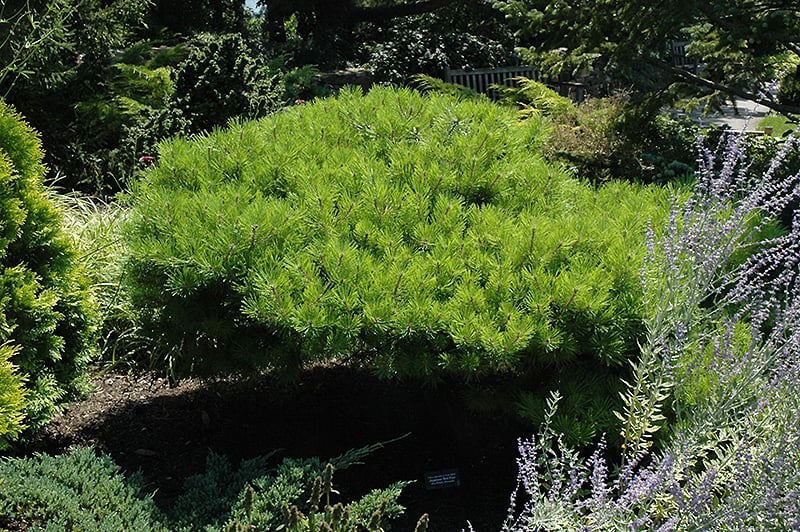
The plant’s foliage is known for being stiff and bright green all year round. The needles can become very long, almost 10 cm, as they come in pairs, but pruning is seldom required.
Botanical Name:Pinus Densiflora
Hardiness Level: H7
12. Monterey Pine
The Monterey pine, although not native to Britain, has been introduced to the land due to its hardiness. The pine grows well in most well-drained soils but is usually suitable for coastal areas. You can plant it in any direction, but make sure it gets full sunlight. Only then will the conifer will grow up to attain an impressive height of 30m or more.
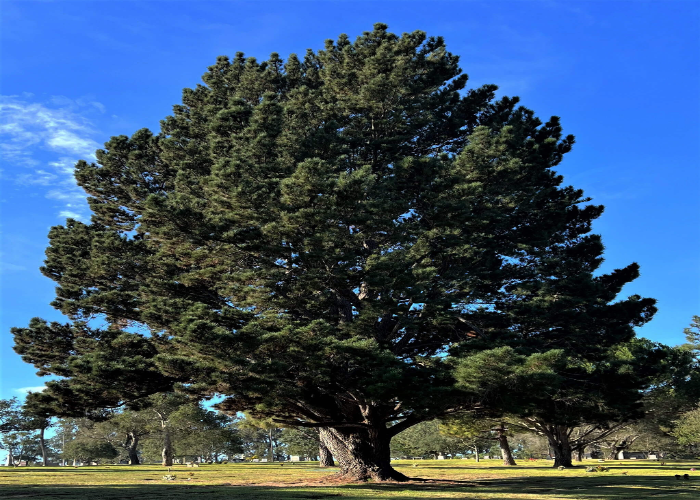
When grown in the southern or lowlands of Britain, it becomes one of the most productive types of pine trees in the UK. The dense dark green needles that occur in groups of threes also make for attractive foliage.
Botanical Name: Pinus Radiata
Hardiness Level: H5
13. Bhutan Pine
The Bhutan pine is one of the loveliest of the variety out there due to its open crown. Starting with a broad, pyramidal shape, it spreads out over time with protruding branches. And when allowed to grow naturally, these branches will stay on the tree till the ground. The Bhutan pine is also known as blue pine and Himalayan pine in different parts of the world.
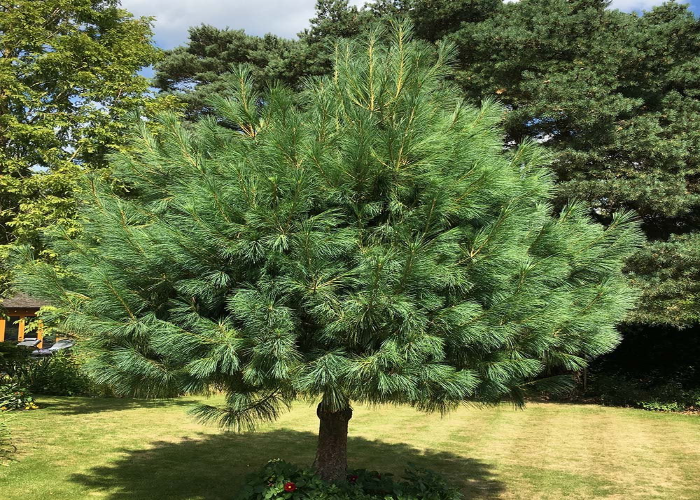
The Bhutan pine is generally smaller in cultivation but can attain a great height of 50 m in its natural habitat. That, along with its beautiful foliage of long, slender, and droopy blue-grey needles, makes the pine a popular one.
Botanical Name:Pinus Wallichiana
Hardiness Level: H6
14. Golden Scots Pine
The golden scots pine is one of the most handsome types of pine trees in the UK. While scots pine is native to the UK, this specific variety is not. But given its hardy nature and ability to thrive in most well-drained soils, it is now widely popular in the region.
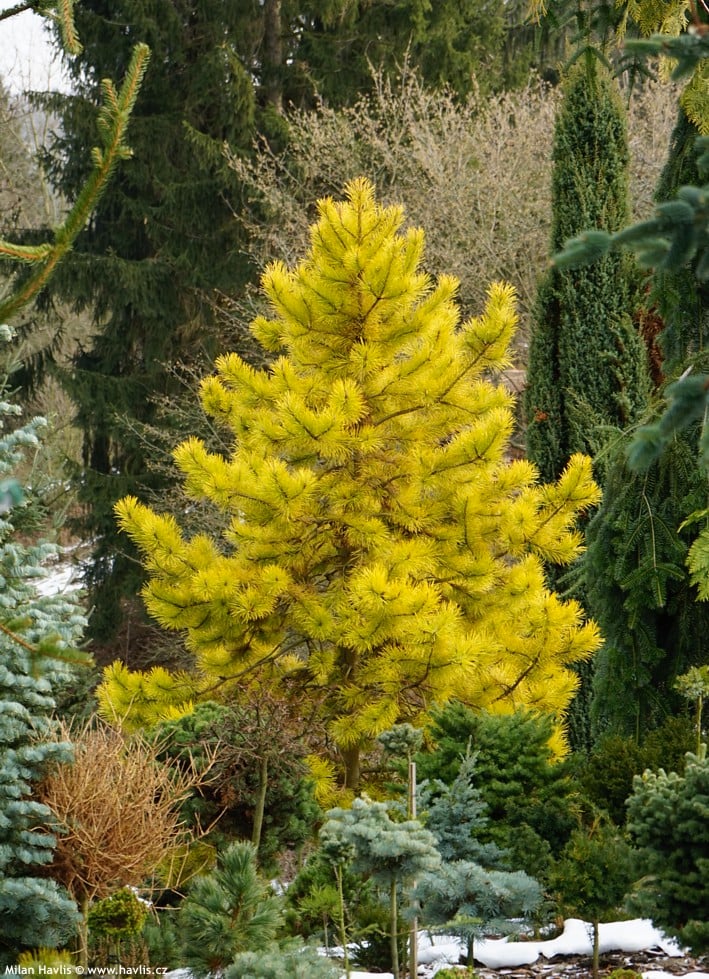
Another reason behind this popularity is the conifer’s amazing foliage. Throughout summer and autumn, it retains its blue-green foliage. But come winter, its needles slowly turn into a dazzling yellow which remains till the spring.
Botanical Name: Pinus Sylvestris ‘aurea’
Hardiness Level: H7
15. Douglas Fir
Douglas Fir, or the Oregon pine, is one of the most popular choices for Christmas trees around the world. This conifer is a fast-growing large evergreen tree with needles that are dark green and double-ranked. These needles also have a sweet fragrance to them when crushed.
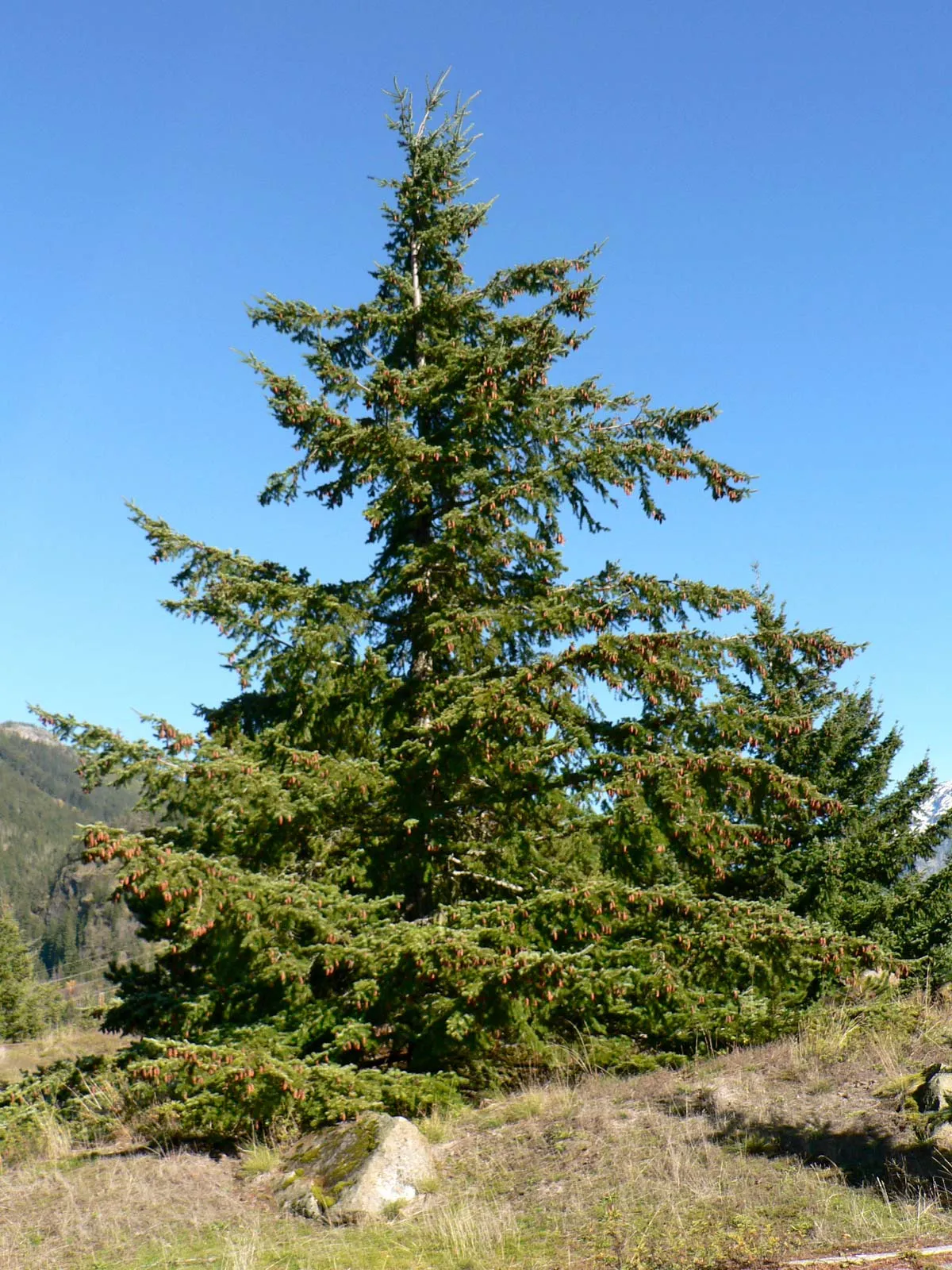
The Douglas fir is also known to grow as tall as 60 meters in Britain. Their conical shape and thick rugged bark ensure that they survive even the coldest of winters. Even though it’s not native to England, the majestic Douglas fir has been present in the country since 1827.
Botanical Name:Pseudotsuga Menziesii
Hardiness Level: H6
16. Noble Fir
The noble fir is not native to England but was introduced to England by the same man who introduced the Douglas Fir. And since then, it has been regarded greatly as a decorative species. It is mainly grown in the wetter, western parts of Britain and is used as a Christmas tree.
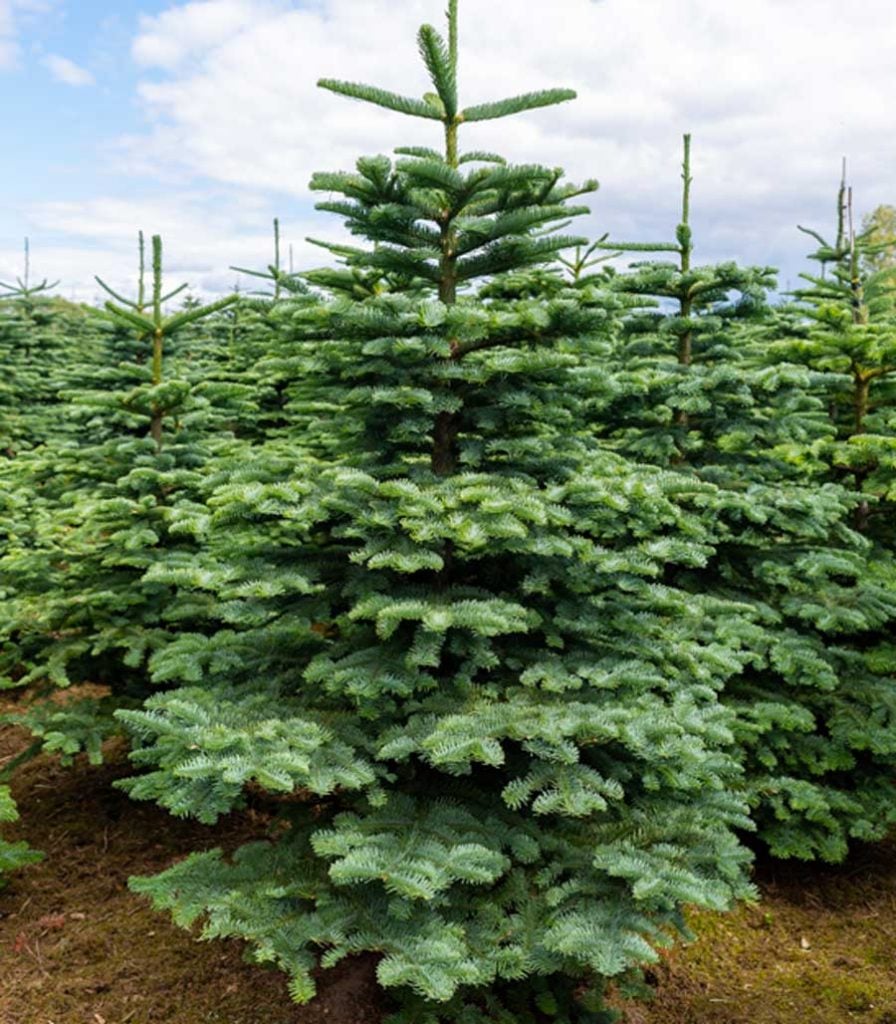
The noble fir is known for its striking foliage, which consists of one-inch long, bluish-green needles. These leaves also have a hint of silver in them, making them look more festive. This type of pine trees UK has vigorous growth but prefers slightly acidic soil.
Botanical Name:Abies Procera
Hardiness Level: H7
17. Grand Fir
The grand fir can be found in the regions of Wales, Scotland, and Northern Ireland. The conifer is known for its beautiful foliage of shiny, dark green blunt needles, which are more than an inch long. The needles also give off a slight citrusy smell when crushed, making it a great Christmas tree.
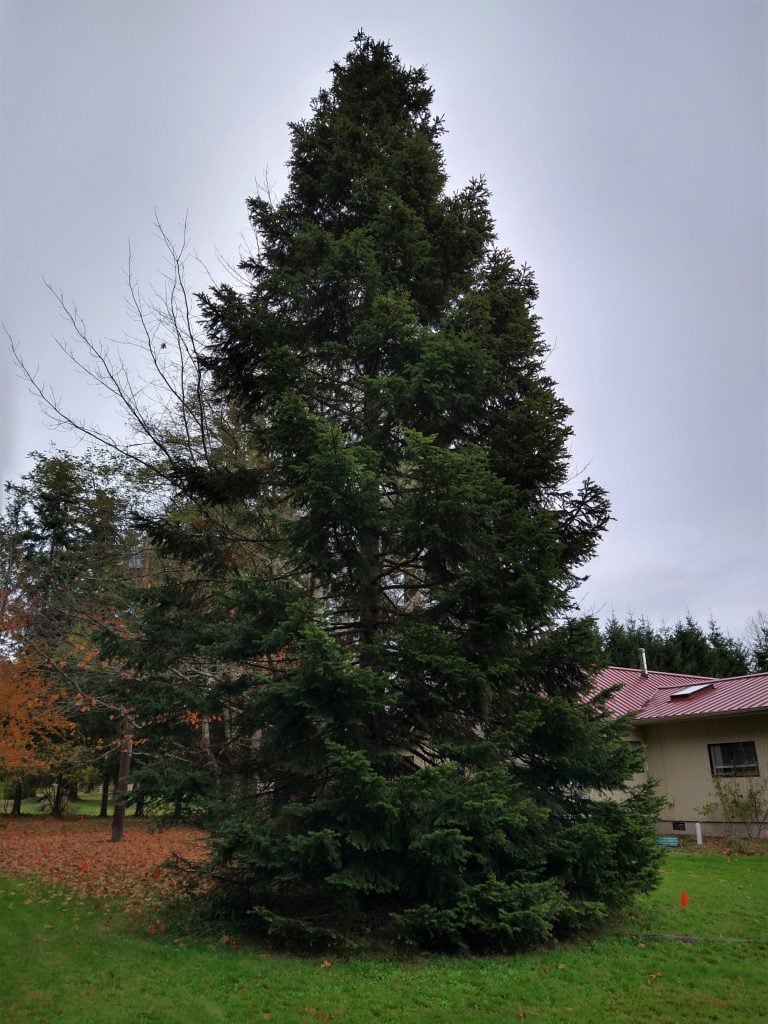
The grand fir is also a fast-growing plant that takes a tall and narrow conical shape. It also prefers neutral to acidic soil that is moist for its ideal growth.
Botanical Name:Abies grandis
Hardiness Level: H7
18. Fraser Fir
Another great choice among the types of pine trees in the UK to turn into a Christmas tree is the Fraser fir. This plant is also great for plantation in gardens and landscapes due to its hardiness and low maintenance. The conifer prefers moist soil that is well-drained and slightly acidic, along with the full sun.
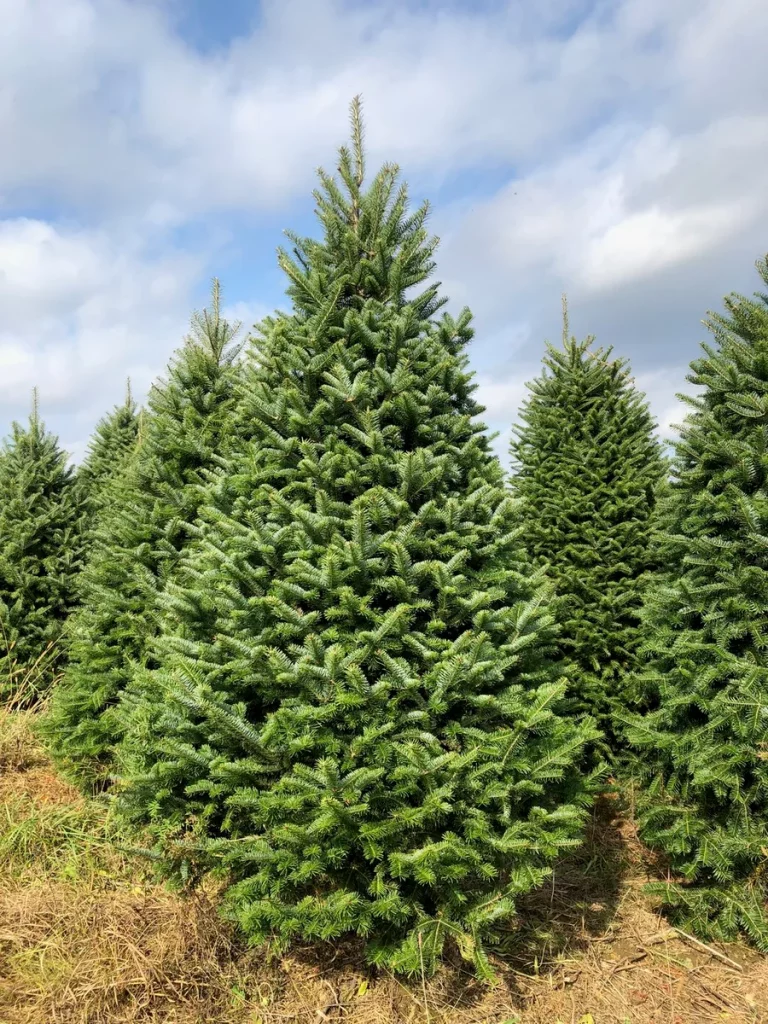
The Fraser fir is known for its foliage that consists of 1-2cm long dark green, flattened needles. The leaves also have two white bands at the base and have a pleasant scent to them.
Botanical Name:Pinus fraseri
Hardiness Level: H7
19. Caucasian Fir
Caucasian or Nordmann fir is one of the most popular choices for Christmas trees in the whole UK. This evergreen conifer can turn up into a tree of great size, with a height of 30m or more. The narrow conical or columnar crown, along with its glossy dark foliage, brings the spirit of joy to most homes.
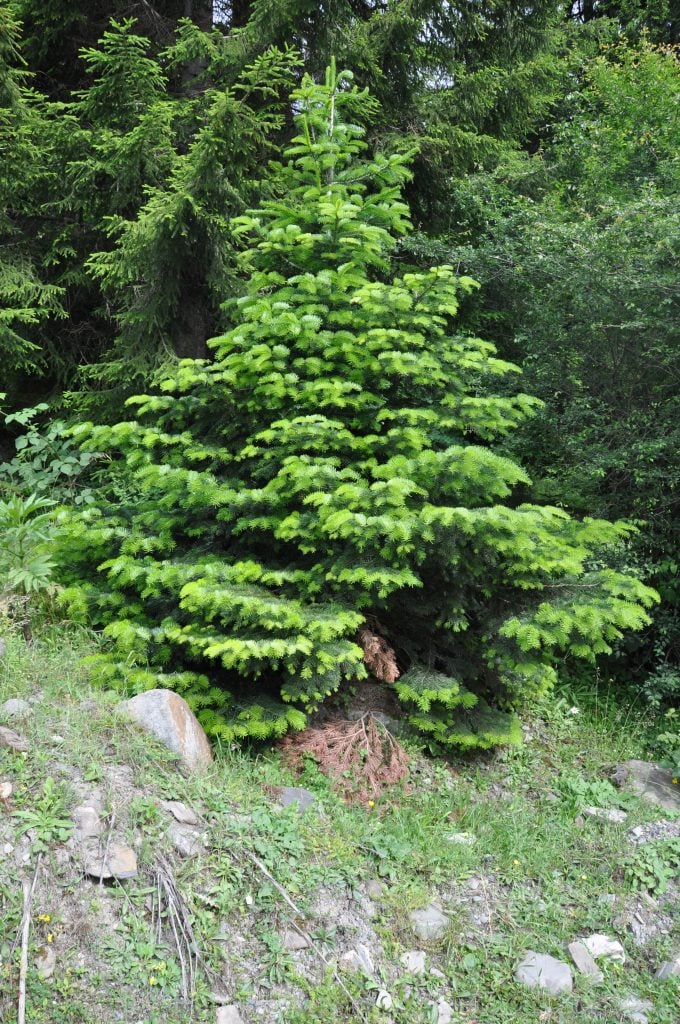
The Nordmann fir has a remarkable symmetry to its entire form that makes it the most common choice. The needles, too, are full, lush, and soft to the touch. Nordmann fir is also hardy and grows well in most soils with a slightly acidic nature.
Botanical Name:Abies nordmanniana
Hardiness Level: H7
20. Norway Spruce
The Norway spruce is not native to England but has been cultivated there since the early 20th century. This particular conifer is a fast-growing one that has many other names like common spruce, spruce-fir, and white deal. The tree has a conical shape and can reach an impressive height of 40 meters.
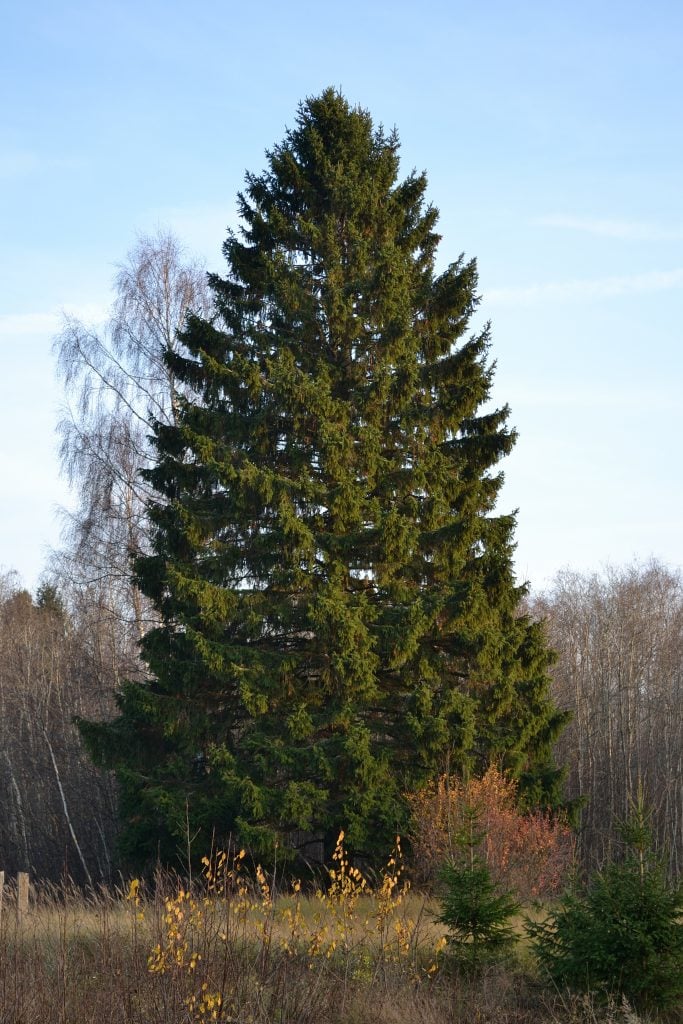
Among the othertypes of pine trees in the UK, this conifer is known for its tough and elastic timber. The dense foliage of dark green, glossy, needle-like leaves also makes for a sheer contrast against the greyish-brown bark.
Botanical Name: Picea Abies
Hardiness Level: H7
21. Sitka Spruce
The Sitka or Tideland spruce is not native to the UK as well. But as of the 21st century, it is one of the most important tree varieties. The conifer is a fast-growing plant and even thrives in poor-quality soils. And because of the timber’s versatile nature, it is often produced commercially.
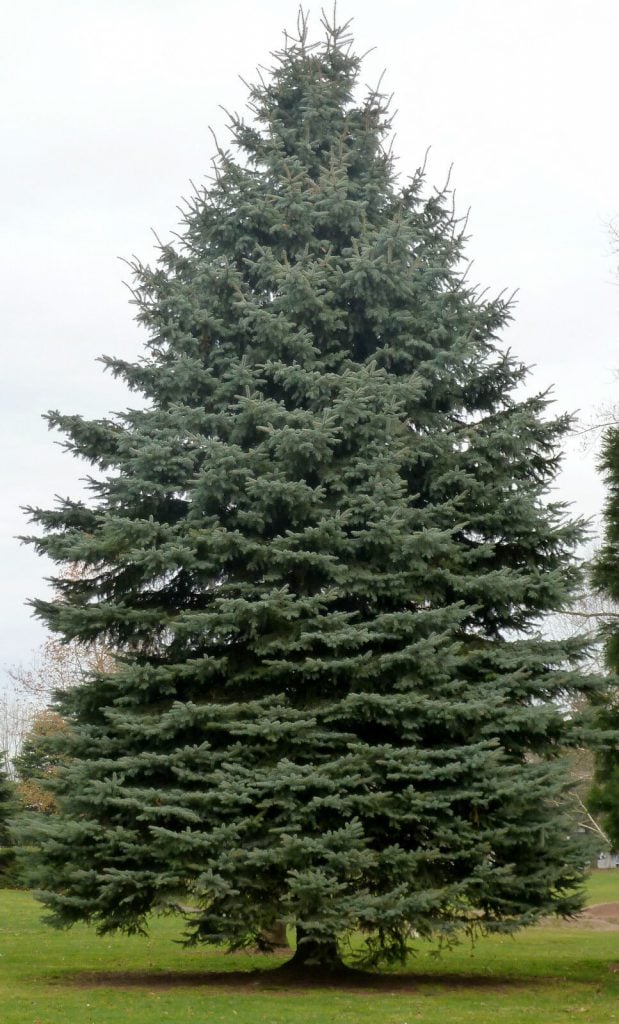
The Sitka spruce has a signature flattened dark green solitary needle-like foliage accompanied by a greyish-brown bark. One way to know the age of Sitka is by looking at its bark, as it flakes off when matured.
Botanical Name: Picea Sitchensis
Hardiness Level: H7
22. Blue Spruce
The blue spruce, also known as the Colorado spruce, is known for its bluish tint that sets them apart. It gets its name from its stiff needles, pointed and bluish-grey-green, and curves upwards. The needles are also covered in wax, making a type of pine trees UK known for its needle retention.
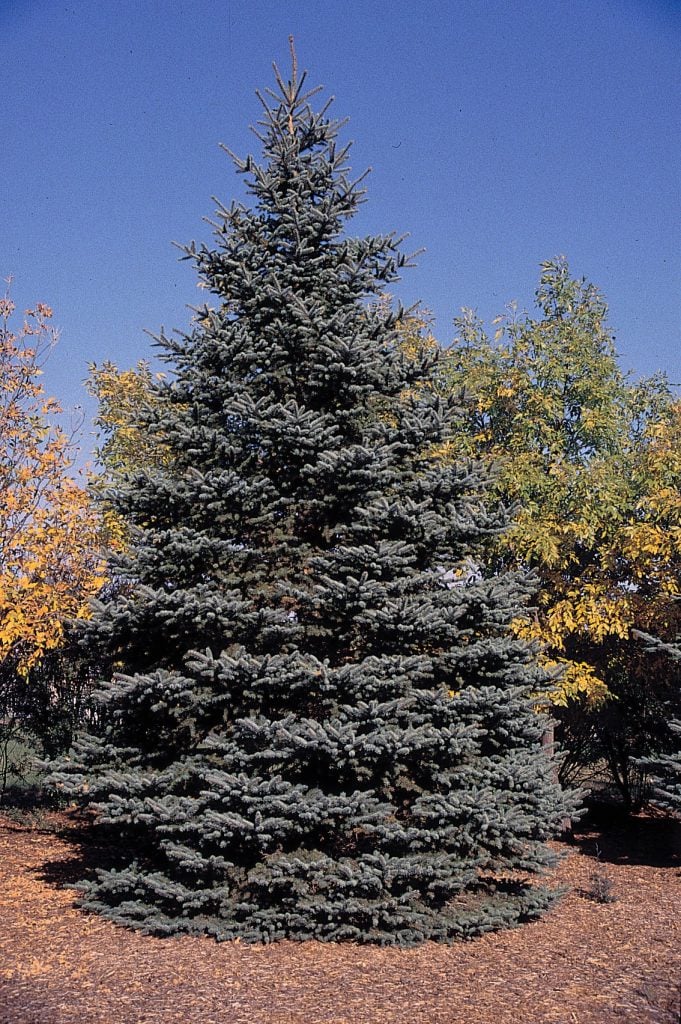
Botanical Name:Picea pungens
Hardiness Level: H7
23. Western Hemlock
The Western Hemlock is an ornamental species of conifers that were introduced to Scotland in the 19th century. The plant is also cultivated economically on a small scale and is used for buildings and box making. The tree also grows well and needs very low maintenance to prosper.
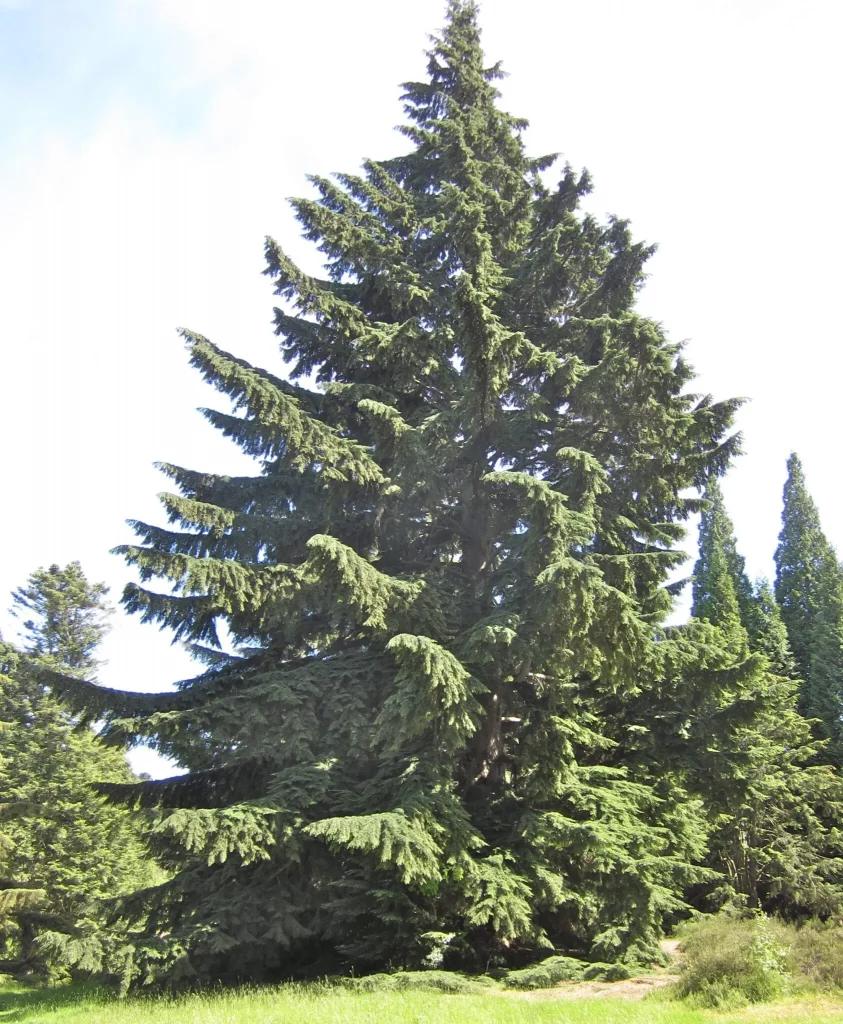
This evergreen can become large over time and can attain almost 30m or more growth. Its foliage is short, flattened, and dark green with a white stripe at the base. This, along with its spreading branches, gives the tree an elegant look.
Botanical Name:Tsuga Heterophylla
Hardiness Level: H6
24. Eastern Hemlock
The Eastern hemlock is also known by its other names like Canada hemlock, common hemlock, and white hemlock. The conifer is usually low-maintenance but needs humus-rich, well-drained soil that is acid to slightly alkaline during cultivation. The tree also thrives under the full sun but is also very shade tolerant.
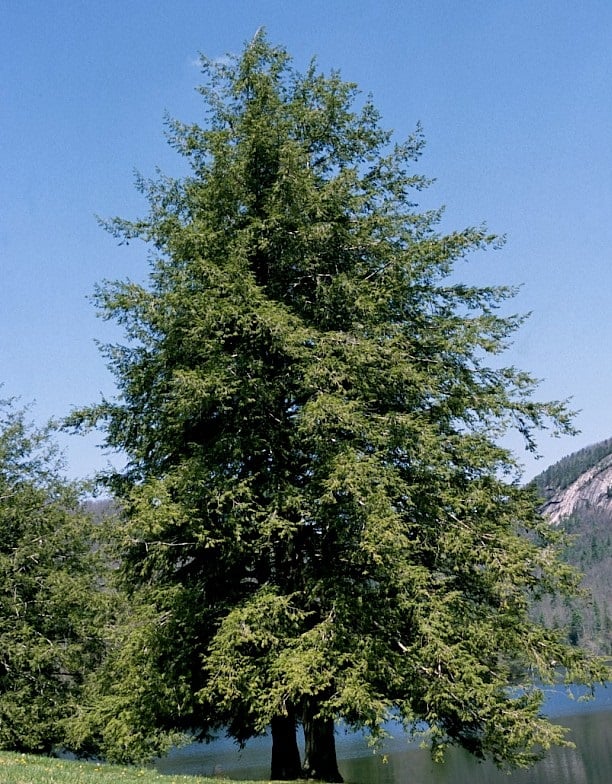
The eastern hemlock is known for its beautiful foliage that sets it apart from the othertypes of pine trees in the UK. The short, dark green leaves are found in ranks of two and create a flat spray of foliage.
Botanical Name: Tsuga Canadensis
Hardiness Level: H7
25. Juniper
Among Englan’s native conifers, Juniper is the one that is the least common. However, this conifer can be found in gardens and landscapes everywhere, trimmed to shape. The plant is an evergreen dioecious shrub that needs little maintenance.
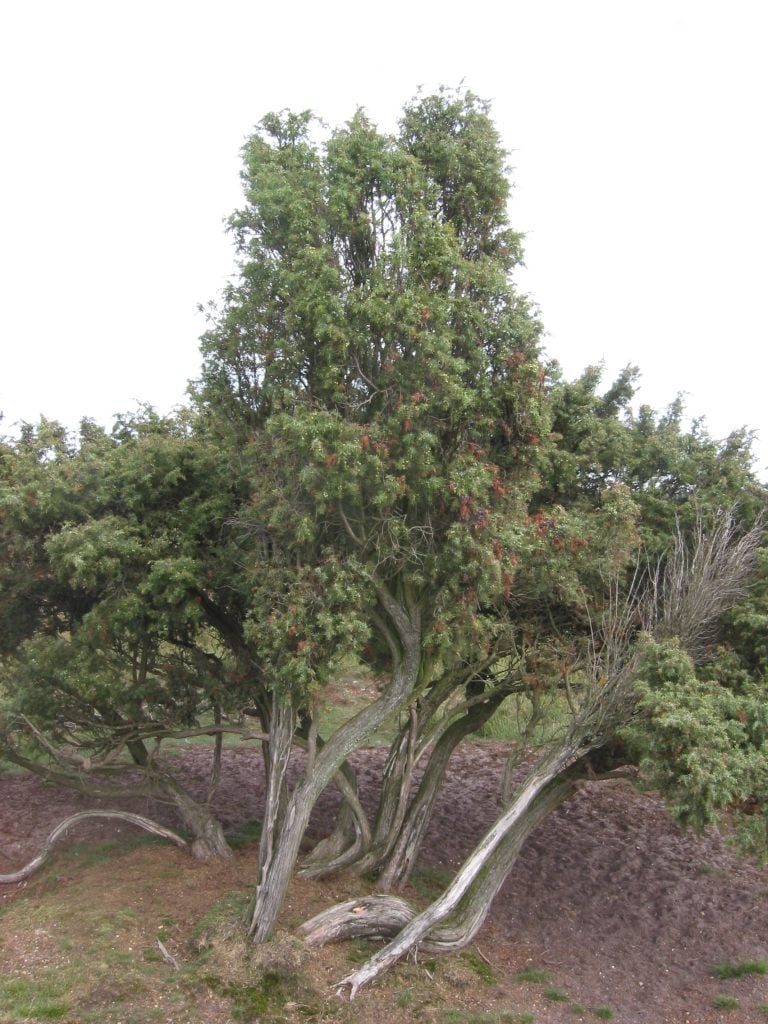
The common juniper is also known for its beautiful and aromatic grey-green needles that form a bushy habit. The needles are very spiky but are usually small. The plant also has an overall spread of 2.5 to 4 meters.
Botanical Name: Juniperus communis
Hardiness Level: H7
Wrapping Up
In conclusion, conifers are extremely beneficial to the environment as a whole, as they are the ideal tree option for a big landscape. Not only are these trees aesthetic and hardy, but they also support local ecosystems by providing shelter. So, you can never go wrong with planting different types of pine trees in the UK on your property.
And whether you opt for a scots pine or blue spruce, your backyard is sure to look beautiful throughout the year. Any kind of conifer would change your landscape drastically and be there for hundreds of years. So, subscribe to our newsletter, and get regular tips about trees and their everyday care.
Frequently Asked Questions
How Do I Identify a Pine Tree Uk?
Pines are mainly Conifers, and to recognize them, look at the foliage. If the foliage is needles or scales, then you probably have a conifer at hand. Conifers include pines, firs, cypresses, larches, and spruces. And most conifer trees are evergreen with needles that stay on throughout the year.
What Is the Most Popular Pine Tree?
One of the most popular pine trees around the world is the Eastern White or Weymouth Pine (Pinus strobus). This tree is fast-growing and has lived for a long time. One of the most important species of North America, this pine is grown for both its timber as well as landscape purposes. It is also a popular choice for Christmas trees in the UK.

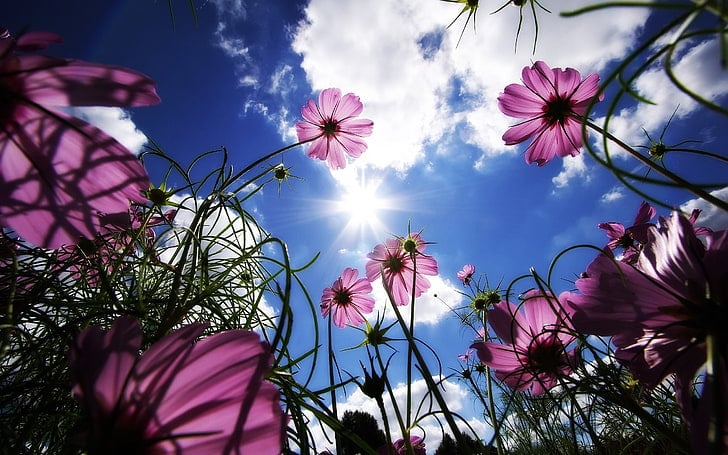
![How To Grow and Maintain Areca Palm Houseplants [Dypsis Lutescens]](https://staging.thearches.co.uk/wp-content/uploads/How-To-Grow-Care-For-Areca-Palm-Houseplants.jpg)
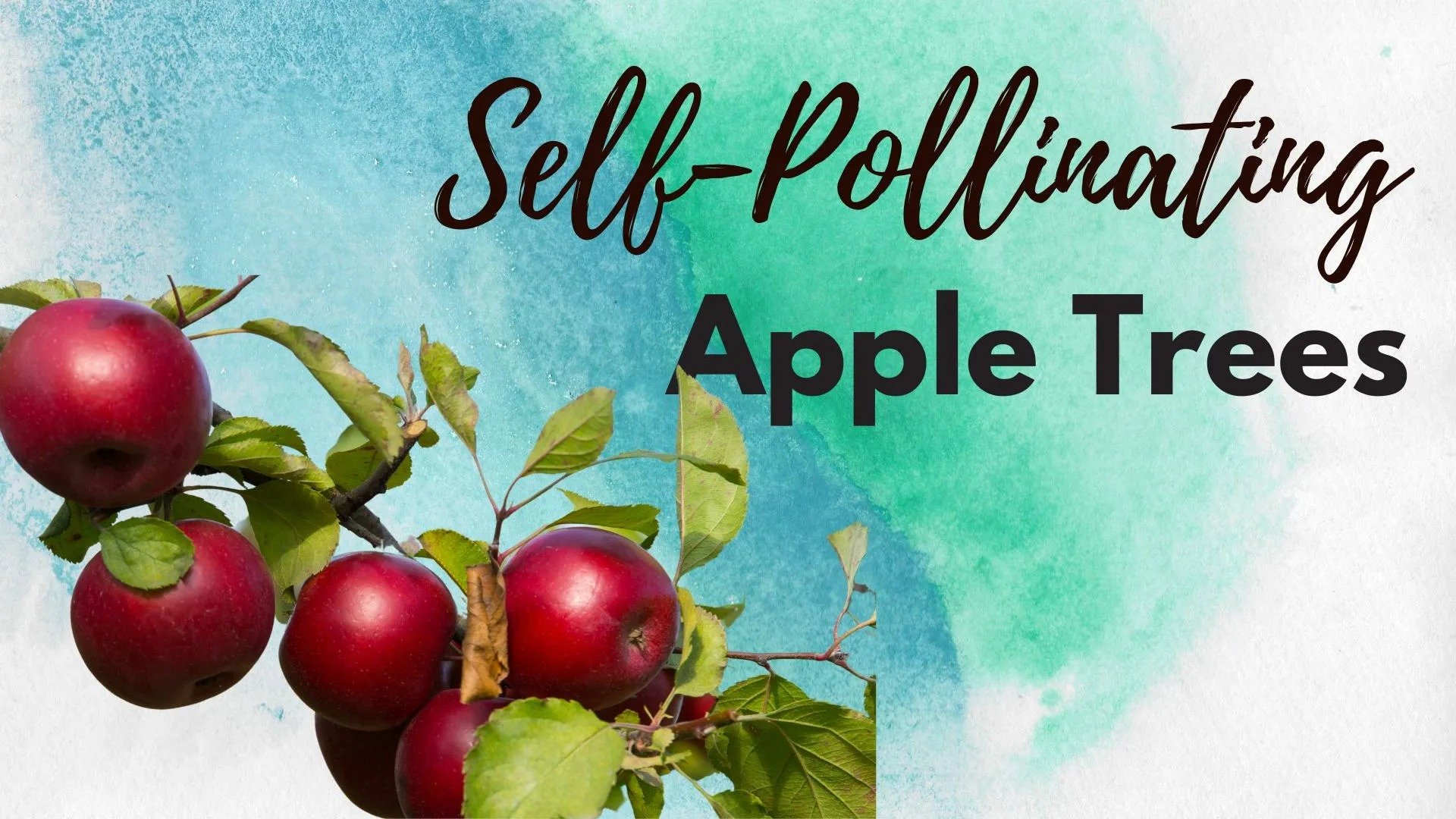
![15 Hardy Evergreen Shrubs that Are Perfect for Pots [UK]](https://staging.thearches.co.uk/wp-content/uploads/Evergreen-Shrubs-That-Are-Perfect-For-Pots.jpeg)
